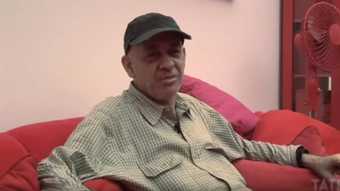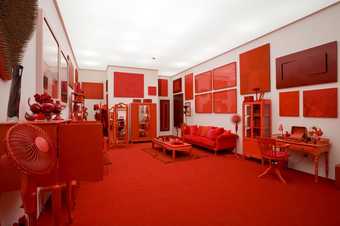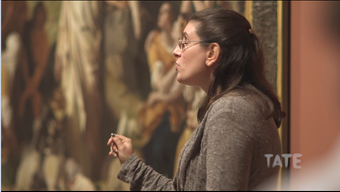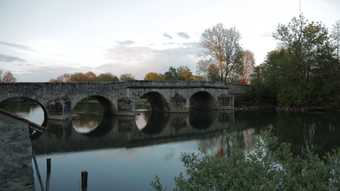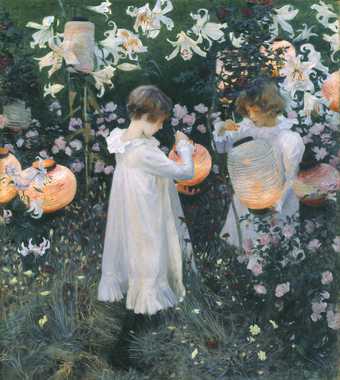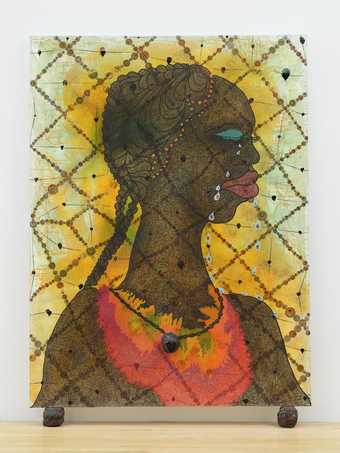Press play and discover the story behind Babel. Hear a detailed description of the artwork and how the artist made the work.
Cildo Meireles Babel, 2001
Babel 2001 is a tall sculptural installation by Brazilian artist Cildo Meireles. It is a circular tower made from hundreds of second-hand analogue radios that the artist has stacked in layers. The height of the tower can vary according to the dimensions of the room in which it is installed. In the display at Tate Modern, it is approximately eight metres tall.
The radios are tuned to many different stations. They are each adjusted to the minimum volume at which they can be heard. Even so, they compete with each other and create a cacophony of low, continuous sound, resulting in inaccessible information, voices or music.
Older radios form the bottom of the tower. These objects date from the 1940’s. They are large bulky units made of materials such as dark wood and brown bakelite, an early plastic. Some of them are in an art deco style and are as large as cabinets or small pieces of furniture.
Generally speaking, each layer of radios is made up of a similar or identical style. As they progress up the tower the layers of radios become more modern. The radios become smaller, more powerful. In the upper parts of the tower, we find the more modern radios made in the 1990’s. These are made mainly of silver coloured metal and plastic.
Many of the radios have small lights as component parts. On the older sets there are illuminated valves, dials and screens. On the more modern sets, there are LED on/off and station indicators. This arrangement, moving from large to small up the tower, creates an interesting effect of perspective. It exaggerates our sense of the tower’s height, as the radios decrease in size the further up the tower they are located.
In the display at Tate Modern, the tower is installed slightly off centre in a darkened room. It is bathed in an indigo blue light that, together with the sound, gives the whole structure an eerie effect and adds to the sense of confusion.
In describing this work, Meireles refers to it as a ‘tower of incomprehension’. The artist relates it to the biblical story of the Tower of Babel. This was a building constructed almost tall enough to reach heaven. This offended God, who as a result made the builders speak in different languages. Their inability to communicate with each other made them divided and they scattered across the earth. The Tower of Babel therefore became the source of all of mankind’s conflicts.
The artist has explained that the work took over ten years to complete: “Babel began in 1990 on Canal Street, in New York. There were eleven years of notes before I finally realised the work in 2001, in Helsinki. Upon observing the quantity and diversity of radios and all the different types of sound objects that were sold around Canal Street, I thought of making a work with radios. Radios are interesting because they are physically similar and at the same time each radio is unique.”
The noise produced by Babel is constant. However, the exact mix of voices, music and information is always changing. No two experiences of this work are ever the same.

